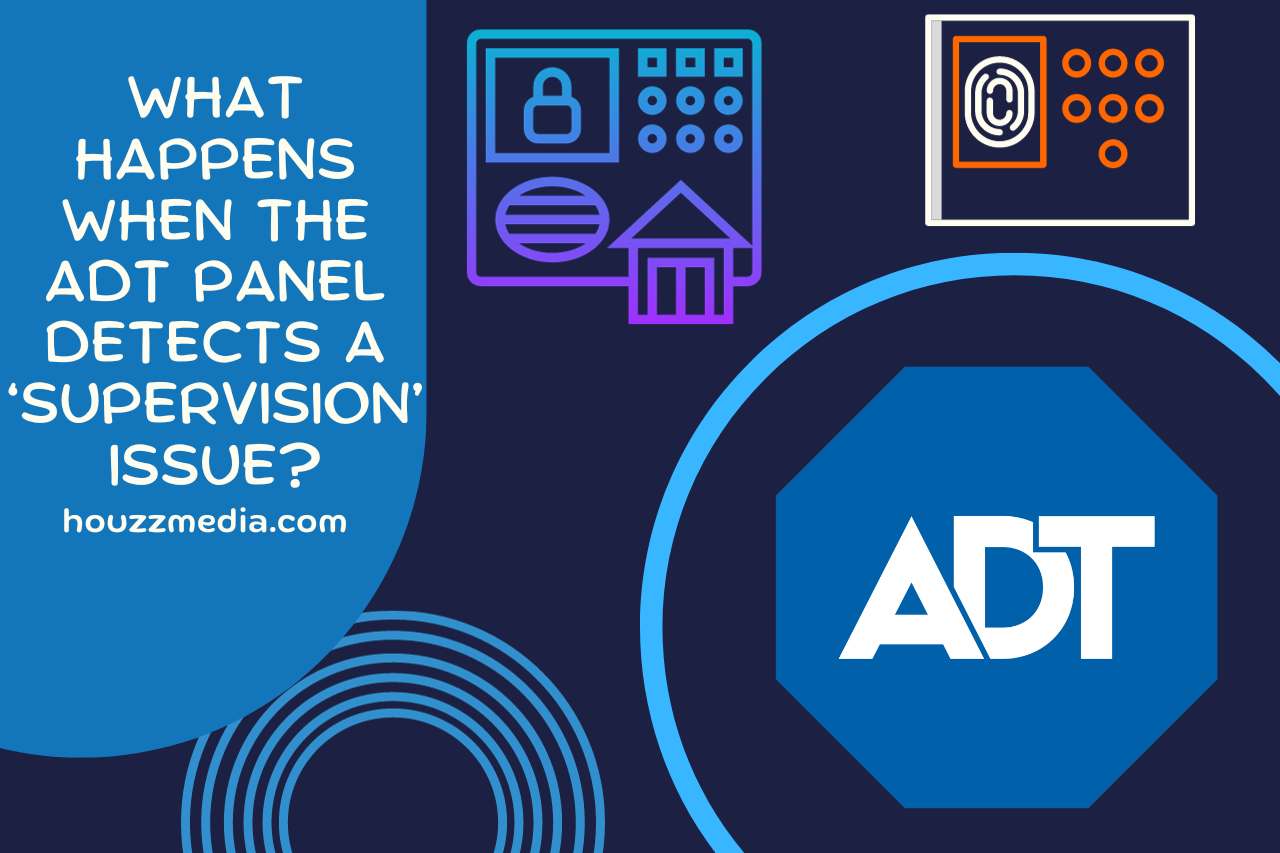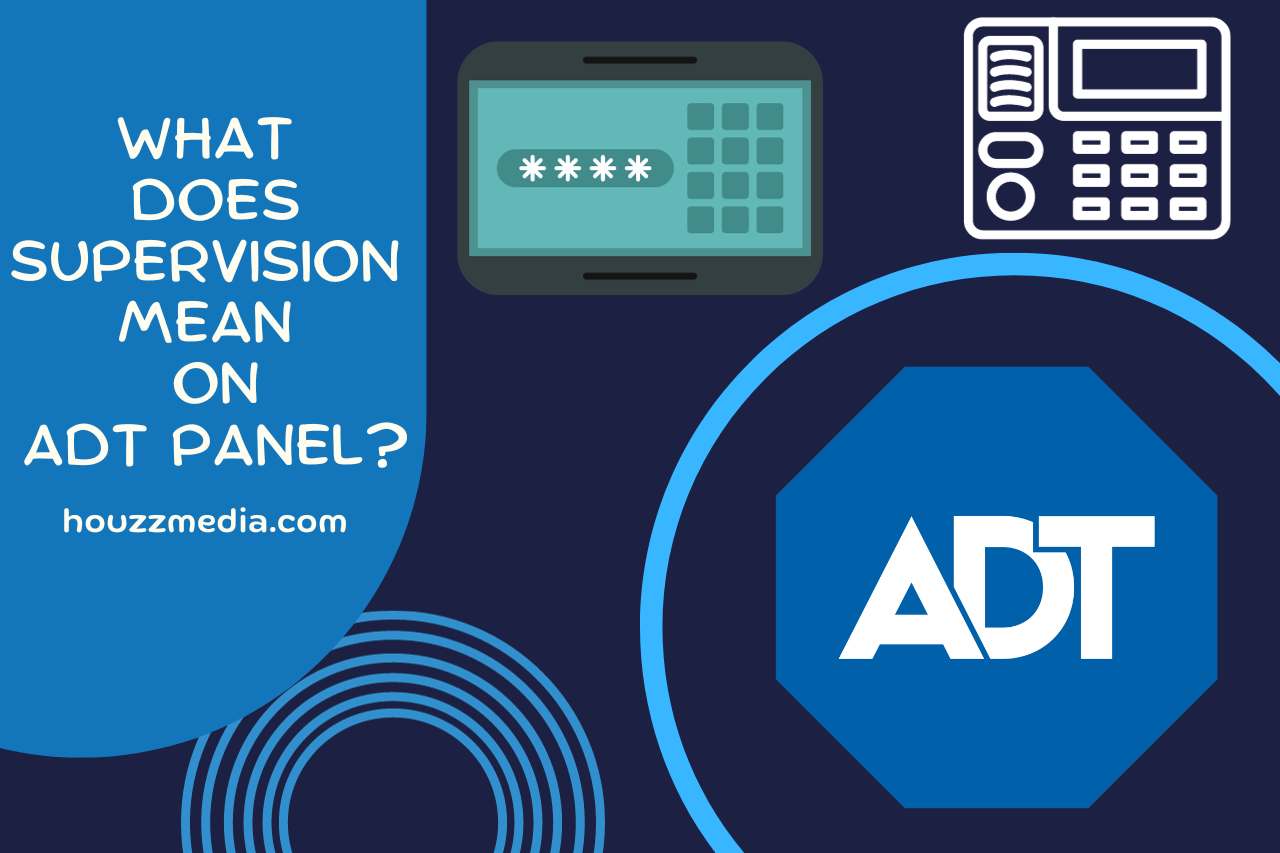What does ‘Supervision’ mean on ADT Panel? Tips for Enhanced Security!
‘What does supervision mean on ADT panel?’ If you are new to the ADT security system, you might be seeking the answer to this question. Supervision on the ADT panel is a pivotal feature that ensures the continuous, efficient operation of all system components, from motion sensors to cameras. This article’s goal is to explore how ADT’s supervision technology offers homeowners peace of mind by proactively monitoring and immediately alerting them to potential malfunctions or irregularities. By the end of this discussion, you will be knowledgeable enough regarding the intricacies of this essential functionality and its role in optimizing your home’s protection.
What does ‘Supervision’ Mean on ADT Panel?
As its name suggests, “Supervision” on the ADT panel refers to the system’s capability to continuously monitor and check the status of sensors and other connected devices. In essence, it ensures that all components are online, responsive, and functioning optimally. Thus, this feature is neglectable in the ADT system. Here, we have gathered essential information about ADT Supervision under 4 topics.
- Continuous Monitoring: The ADT panel routinely sends signals to each sensor, verifying its active status and responsiveness. If a sensor fails to respond within a predetermined time, the panel perceives it as a fault.
- Alerts: In the event of a non-responsive or malfunctioning sensor, the ADT panel will generate an alert to inform the case. This could be displayed as a “Supervision Trouble” or a similar message on the panel’s screen.
- Safety Implication: The supervision function is crucial for security integrity. The reason why, a non-responsive sensor might mean a potential vulnerability in the security system, possibly due to battery failure, damage, or tampering.
- Resolution: Addressing a supervision alert promptly is essential. Depending on the nature of the alert, this might involve replacing a sensor’s battery, checking its positioning, or even replacing the sensor entirely.
Why Does ADT Use ‘Supervision’ in Home Security Systems?
ADT uses Supervision in home security systems because it ensures continuous monitoring and reliability by monitoring the process of sensors. This feature is pivotal for homeowners to feel confident that their systems are active, efficient, and functioning as intended. Basically, the following benefits can be expected through ADT supervision.
- Constant Monitoring: Supervision technology checks system components at regular intervals. If an anomaly like a broken sensor or low battery is detected, the system notifies the user or central station.
- Increased Reliability: With Supervision, the risk of undetected system failures is minimized. Therefore, homeowners can trust that their system is always on alert.
- Preventative Measures: By identifying potential issues early on, homeowners can address them before they become larger problems.
- Enhanced Safety: The main goal of any security system is to enhance safety. Supervision ensures all components, from cameras to motion sensors, work seamlessly together, providing maximum protection.
How Does ‘Supervision’ Work in ADT Panels?
Supervision in ADT panels works by consistently monitoring each component and ensuring it’s functioning properly. This feature safeguards against unnoticed malfunctions and potential security breaches. Moreover, it is responsible in some other areas, such as updating the system. Here is the complete list of tasks.
- Periodic Checks: At every predetermined interval, the ADT panel sends out a signal to each component—like sensors and cameras—to verify their operational status. In general, this check is launched hourly.
- Immediate Alerts: If a component doesn’t respond or sends back an error signal, the ADT panel immediately notifies the homeowner and, in certain configurations, the central monitoring station.
- System Health Reports: On a regular basis, the panel may generate a report highlighting system health, ensuring components are not only functioning but are also optimized.
- Battery Backup Check: ADT panels often come with battery backups to ensure continued operation during power outages. Accordingly, the supervision system regularly verifies the health and charge level of these backups.
- Firmware Updates: Periodic checks can also detect outdated firmware. The panel then either updates automatically or alerts the homeowner to take necessary action.
- Communication Pathways: The panel ensures that communication pathways to central monitoring are intact. Any interruptions to these pathways trigger an immediate alert.

What Happens When the ADT Panel Detects a ‘Supervision’ Issue?
When the ADT panel detects a supervision issue, the system will make a beep sound. In order to solve the issue, you need to find out the root cause.
Here is how your ADT system behaves when it detects a supervision issue.
- Immediate Notification: The panel displays an error message detailing the specific component or zone in question, such as “Living Room Motion Sensor Failure.”
- Audible Alarms: Depending on system configuration, a distinct chime or beep might sound, drawing attention to the issue even if one is away from the panel.
- Remote Alerting: If connected to a smartphone app or online interface, users can receive ‘push’ notifications or emails regarding the supervision issue, too.
- Central Monitoring Station: In monitored setups, the central station may also get alerted, prompting them to contact the homeowner for further action or dispatch a technician if needed.
- Event Log: The panel maintains a record of all supervision issues, which is useful for diagnosing recurring problems or system evaluations.
You May Also Like
- How to Remove ADT Panel from Wall? (Best Practices and Tips)
- What is Wi-Fi Fault on ADT Panel? Here’s What You Need to Know!
- What Type of ADT Panel Do I Have? Identifying Your ADT Panel!
- Where is the Battery Located On ADT Panel? Uncovering Its Hiding Spot!
- Why is My ADT Panel Beeping? Solving the Mystery!
- Is there a Camera On the ADT Panel? (Security & Surveillance)






